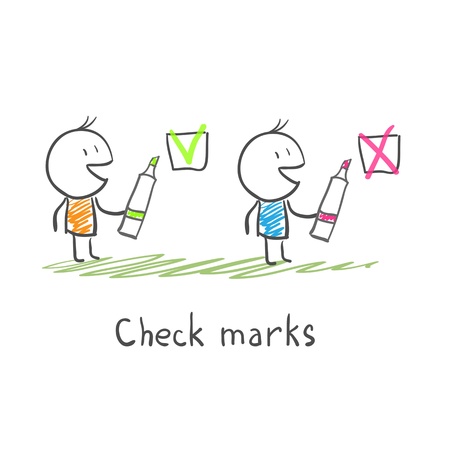SAT写作官方样题高分范文:Let there be dark(8)
- 2017年04月14日15:11 来源:小站教育作者:小站SAT编辑
- 参与(0) 阅读(12282)
本文给大家分享SAT写作样题“Let there be dark”的一篇范文,本文得分4 4 4,作文题目及更多分数段范文,请点击入口。
Sample Student Essays of “Let There Be Dark.” ©2012 by Los Angeles Times. Originally published December 21, 2012.
Scores: 4 4 4
In response to our world’s growing reliance on artificial light, writer Paul Bogard argues that natural darkness should be preserved in his article “Let There be dark”. He effectively builds his argument by using a personal anecdote, allusions to art and history, and rhetorical questions.
Bogard starts his article off by recounting a personal story – a summer spent on a Minnesota lake where there was “woods so dark that [his] hands disappeared before [his] eyes.” In telling this brief anecdote, Bogard challenges the audience to remember a time where they could fully amass themselves in natural darkness void of artificial light. By drawing in his readers with a personal encounter about night darkness, the author means to establish the potential for beauty, glamour, and awe-inspiring mystery that genuine darkness can possess. He builds his argument for the preservation of natural darkness by reminiscing for his readers a first-hand encounter that proves the “irreplaceable value of darkness.” This anecdote provides a baseline of sorts for readers to find credence with the author’s claims.
Bogard’s argument is also furthered by his use of allusion to art – Van Gogh’s “Starry Night” – and modern history – Paris’ reputation as “The City of Light”. By first referencing “Starry Night”, a painting generally considered to be undoubtedly beautiful, Bogard establishes that the natural magnificence of stars in a dark sky is definite. A world absent of excess artificial light could potentially hold the key to a grand, glorious night sky like Van Gogh’s according to the writer. This urges the readers to weigh the disadvantages of our world consumed by unnatural, vapid lighting. Furthermore, Bogard’s alludes to Paris as “the famed ‘city of light’”. He then goes on to state how Paris has taken steps to exercise more sustainable lighting practices. By doing this, Bogard creates a dichotomy between Paris’ traditionally alluded-to name and the reality of what Paris is becoming – no longer “the city of light”, but moreso “the city of light…before 2 AM”. This furthers his line of argumentation because it shows how steps can be and are being taken to preserve natural darkness. It shows that even a city that is literally famous for being constantly lit can practically address light pollution in a manner that preserves the beauty of both the city itself and the universe as a whole.
Finally, Bogard makes subtle yet efficient use of rhetorical questioning to persuade his audience that natural darkness preservation is essential. He asks the readers to consider “what the vision of the night sky might inspire in each of us, in our children or grandchildren?” in a way that brutally plays to each of our emotions. By asking this question, Bogard draws out heartfelt ponderance from his readers about the affecting power of an untainted night sky. This rhetorical question tugs at the readers’ heartstrings; while the reader may have seen an unobscured night skyline before, the possibility that their child or grandchild will never get the chance sways them to see as Bogard sees. This strategy is definitively an appeal to pathos, forcing the audience to directly face an emotionally-charged inquiry that will surely spur some kind of response. By doing this, Bogard develops his argument, adding gutthral power to the idea that the issue of maintaining natural darkness is relevant and multifaceted.
Writing as a reaction to his disappointment that artificial light has largely permeated the prescence of natural darkness, Paul Bogard argues that we must preserve true, unaffected darkness. He builds this claim by making use of a personal anecdote, allusions, and rhetorical questioning.
This response scored a 4/4/4.
Reading—4: This response demonstrates thorough comprehension of the source text through skillful use of paraphrases and direct quotations. The writer briefly summarizes the central idea of Bogard’s piece (natural darkness should be preserved; we must preserve true, unaffected darkness), and presents many details from the text, such as referring to the personal anecdote that opens the passage and citing Bogard’s use of Paris’ reputation as “The City of Light.” There are few long direct quotations from the source text; instead, the response succinctly and accurately captures the entirety of Bogard’s argument in the writer’s own words, and the writer is able to articulate how details in the source text interrelate with Bogard’s central claim. The response is also free of errors of fact or interpretation. Overall, the response demonstrates advanced reading comprehension.
Analysis—4: This response offers an insightful analysis of the source text and demonstrates a sophisticated understanding of the analytical task. In analyzing Bogard’s use of personal anecdote, allusions to art and history, and rhetorical questions, the writer is able to explain carefully and thoroughly how Bogard builds his argument over the course of the passage. For example, the writer offers a possible reason for why Bogard chose to open his argument with a personal anecdote, and is also able to describe the overall effect of that choice on his audience (In telling this brief anecdote, Bogard challenges the audience to remember a time where they could fully amass themselves in natural darkness void of artificial light. By drawing in his readers with a personal encounter...the author means to establish the potential for beauty, glamour, and awe-inspiring mystery that genuine darkness can possess.... This anecdote provides a baseline of sorts for readers to find credence with the author’s claims). The cogent chain of reasoning indicates an understanding of the overall effect of Bogard’s personal narrative both in terms of its function in the passage and how it affects his audience. This type of insightful analysis is evident throughout the response and indicates advanced analytical skill.
Writing—4: The response is cohesive and demonstrates highly effective use and command of language. The response contains a precise central claim (He effectively builds his argument by using personal anecdote, allusions to art and history, and rhetorical questions), and the body paragraphs are tightly focused on those three elements of Bogard’s text. There is a clear, deliberate progression of ideas within paragraphs and throughout the response. The writer’s brief introduction and conclusion are skillfully written and encapsulate the main ideas of Bogard’s piece as well as the overall structure of the writer’s analysis. There is a consistent use of both precise word choice and well-chosen turns of phrase (the natural magnificence of stars in a dark sky is definite, our world consumed by unnatural, vapid lighting, the affecting power of an untainted night sky). Moreover, the response features a wide variety in sentence structure and many examples of sophisticated sentences (By doing this, Bogard creates a dichotomy between Paris’ traditionally alluded-to name and the reality of what Paris is becoming – no longer “the city of light”, but moreso “the city of light…before 2AM”). The response demonstrates a strong command of the conventions of written English. Overall, the response exemplifies advanced writing proficiency.

























